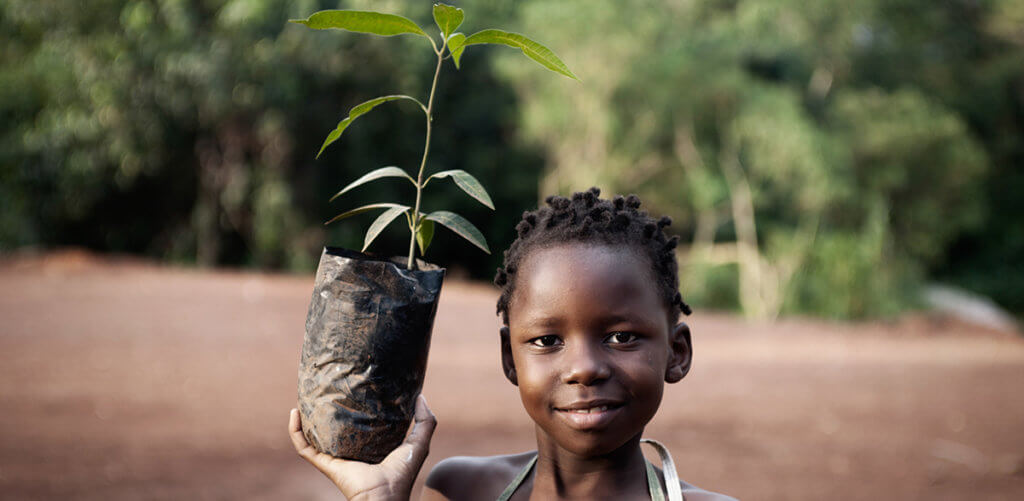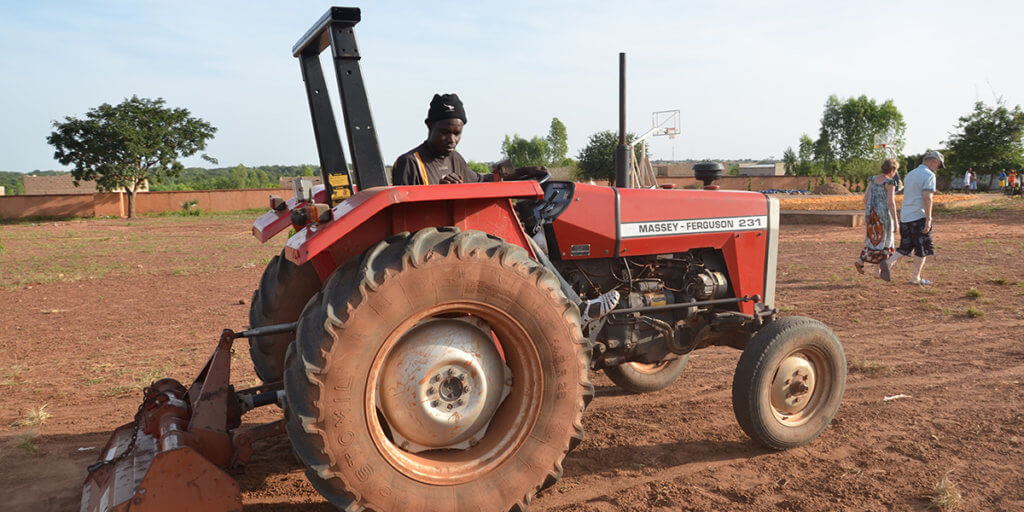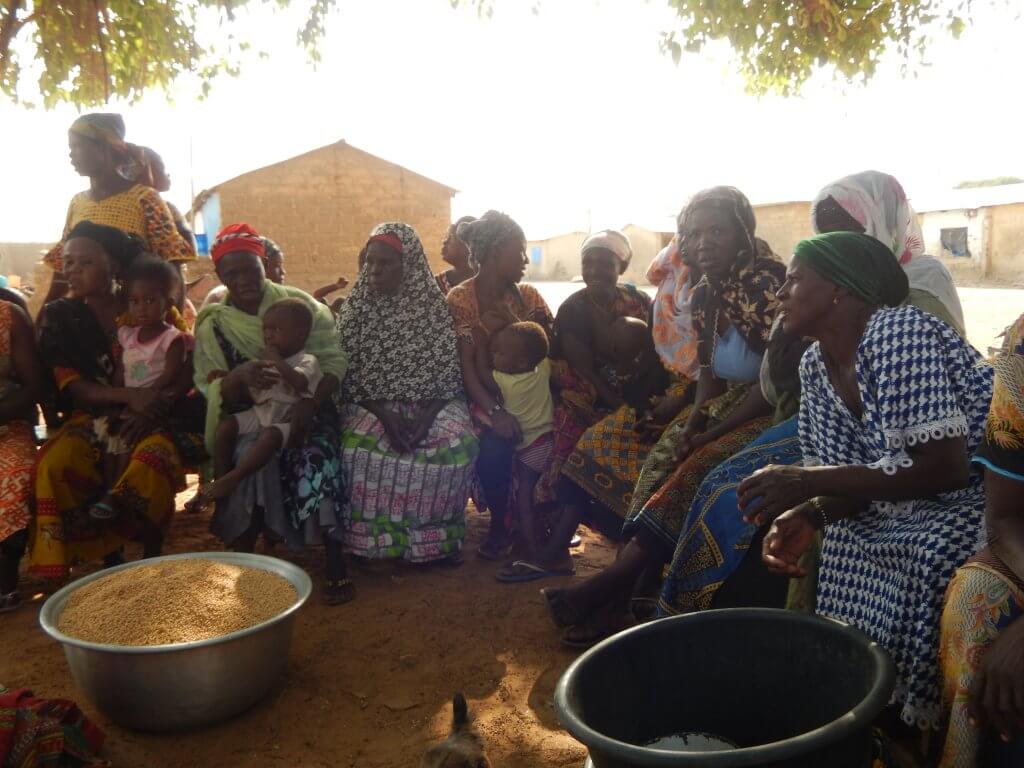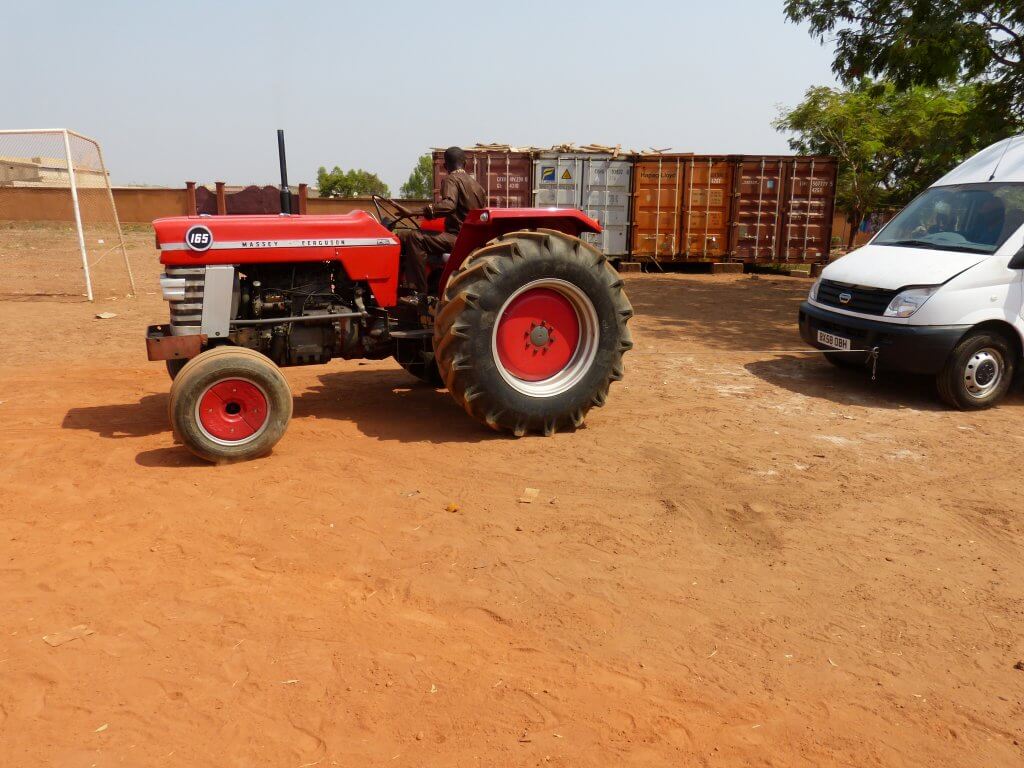FRUIT TREES FOR LIFE In past centuries, over 10 million Africans were forcibly taken from their homes as slaves, many by our own country. Their free labour enabled western nations to develop beyond their competitors and become the richest nations in the world. At the same time, robbed of its work-force and its hope for the future, Africa sank further into poverty. Fruit Trees for Life is a project that seeks to redress that balance. Along the old slave routes and in the very same villages from which slaves were once taken, we aim to plant 1 million fruit trees. At the moment (June 2019) we have planted 44 orchards with a further 4 planned for this year. Fruit Trees for Life aims to
Fruit Trees for Life aims to
- Give something back for all that we have taken from Africa
- Help many of the world’s poorest people overcome the effects of malnutrition, particularly vitamin A deficiency
- Lift villages out of poverty by giving them a commodity that can readily be sold or traded for other essential items at local markets
- Boost the environment, halting the desertification and degradation of the soil and promoting indigenous species of fruit trees
- Create a habitat that encourages the proliferation of wild life, especially birds, small animals and insects and also a garden once the trees are established to plant vegetables and provide welcome shade from the harsh sun.
How will “Fruit Trees for Life” work? Indigenous fruit trees are readily available throughout Africa. Once established they ensure a continuous supply of healthy food for many years. In spite of this, there are surprisingly few fruit trees in the villages of West Africa. Reasons for this include a failure to project young saplings from the ever-present grazing animals, lack of training in the need to water & fertilise young trees and the all-pervasive habit of burning the bush-land every year, a practice that destroys all young trees. Working with our partners on the ground in West Africa, we will plant groves of 50 to 100 trees in an area that is protected from livestock by wire-netting. The project leader in each village will ensure that the trees are regularly watered and that during the annual burning of the land, the tree enclosure is protected by a fire break. Careful support and monitoring by ourselves and our local representative will give each plantation the greatest chance of success. Most indigenous trees start producing fruit within four years, giving significant benefit to the local community within a fairly short time-period. A mango seedling, for example, after just 4 years can bear fruit that is both good to eat and easy to sell. This fruit also is high in vitamin A which projects the children from blindness. Vitamin A deficiency is a major cause of childhood blindness (between 250,000 to 500,000 cases per year). It also contributes to the deaths of another 500,000 children per year as it causes poor immunity against infection.
TRACTORS………  Jacob’s Well Appeal has been very fortunate to have a donor that gives us tractors and agricultural equipment for schools and for our seedbank community project.
Jacob’s Well Appeal has been very fortunate to have a donor that gives us tractors and agricultural equipment for schools and for our seedbank community project.
………………IN SCHOOLS
Jacob’s Well Appeal partners with schools in Burkina Faso and Ghana and have sent tractors to them so that they can grow crops to feed the children at the school. One school does particularly well – it not only grows wheat for itself, but it uses its tractors to plough for the local farmers (‘commercial ploughing’) which the farmers pay for in grain. This means that the school had enough grain this year to hand some out to the very poor families that were struggling to eat. They also use the tractors to grow beans and peanuts and other crops in the dry season. They are now opening an agricultural school to try and train the children on better farming methods.
…………in the SEED BANK COMMUNITY PROJECT 
Our partners in Ghana, C4C, run a seed bank project with two communities. They identify a poor community that is struggling and discuss with the women in that community whether they want to do a farming project. The women are given enough soya seed to plant an acre of land, which the chief of the community agrees to give them. This acre is then ploughed using the tractors that have been donated to us. When all the women’s fields are done, the tractors are then used to plough commercially, to help pay for their maintenance. At harvest time the women return the original seed (6 bowls) and keep the remainder. This year we also used fertilizer, with the advice of the Ghanaian government, and the yield was significantly higher. The women ‘pay’ for the fertilizer by giving more seed. Without fertilizer the acre yields about 36 bowls, leaving the women with around 30 bowls. With fertilizer the yield was over 120 bowls – leaving the women with 100 bowls of better quality soya. They were very happy with the project and each year more women want to join. After 3-5 years these women will become self sufficient and C4C will find 2 more communities to work alongside.

